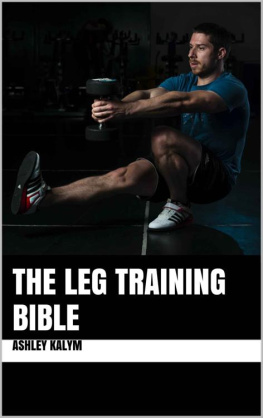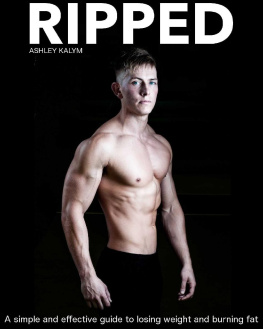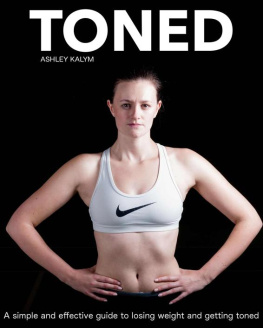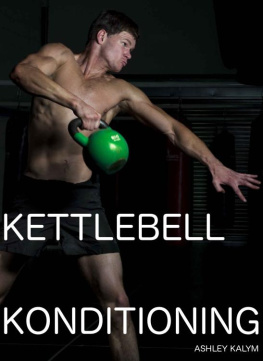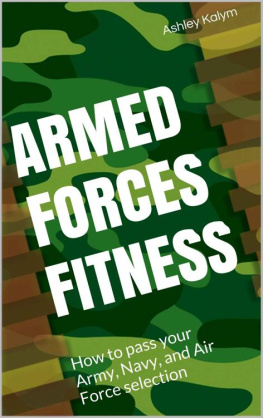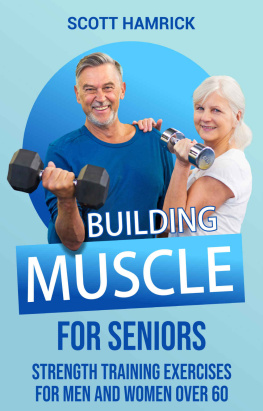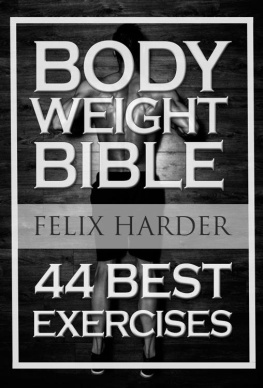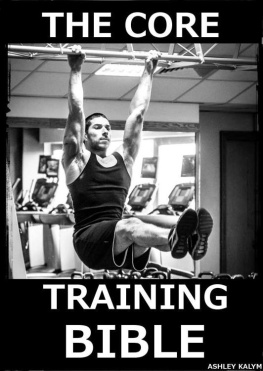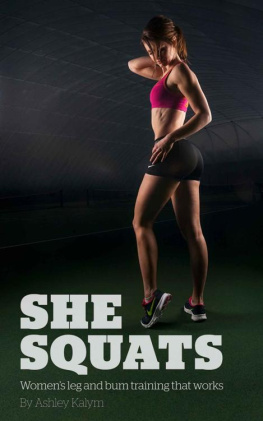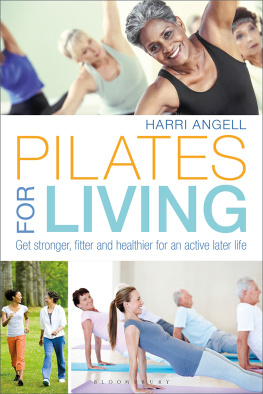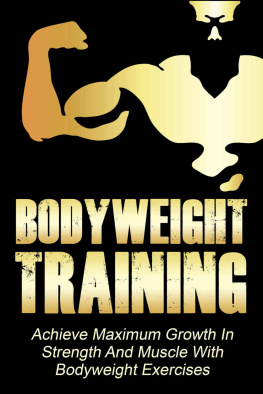The Leg Training Bible
The leg training bible is a complete guide to training the lower body, whether that is to build muscle, develop strength, or gain stamina and muscular endurance.
The Leg Training Bible aims to be a partner book to the Pull-up , Push-up , and Core Training Bibles , and is designed to be used alongside those books in order to develop a complete physique and all round athletic ability.
Inside you will learn how to perform the squat, lunge, box jump, and many other exercises. Filled with high quality photos, and simple and informative exercise descriptions, this is the only book you will need to take your leg training to the next level.
Copyright 2012 Ashley Kalym
All rights reserved. No portion of this book, whether in print or electronic format, may be duplicated or transmitted without written permission of the publisher, except where permitted by law.
Acknowledgments
Thanks must go to Chris Frosin for the photography work, and to Jon Leonard for the use of Funktion Fitness Gym.
Chriss photography work can be found at the following link; www.chrisfrosin.co.uk
You can learn more about Funktion Fitness here; www.funktionfitness.com
Welcome to The Leg Training Bible . This book aims to complete the set of books that I have written concerning building a solid foundation of strength and athleticism.
Alongside The Pull-up Bible , The Push-up Bible , and The Core Training Bible , spending time with the exercises I have presented will take your physical performance to the next level, whether your future is in sport, police or law enforcement, the military, or just for the challenges that you will face in everyday life.
The lower body is used for almost all movement, from walking, running, jumping, changing direction, and any other task that requires strong powerful movements. Even exercises that use primarily the upper body will rely on the lower body for power generation and a solid foundation.
The lower body is home to the largest and most powerful muscles in the human body, which include the Glutes, Quads, and Hamstrings. As they are the largest and most powerful muscles in the body, training them has a huge physiological effect on the body. Exercises like squats, lunges and deadlifts elicit a very large hormonal and endocrine response, which increases growth hormone production and release, and it is this which is responsible for the huge power and strength that is enjoyed by top level athletes.
This book is different to the others in this series by the fact that we will look at weighted and barbell exercises for the first time. There is a very good reason for this. As I explained earlier, the lower body is home to the largest and most powerful muscles in the body. As such, just using your bodyweight is sometimes just not enough resistance to achieve the results that we are looking for. That is not to say that there are no bodyweight and callisthenic movements that we can use; on the contrary, we will use the bodyweight squat, single leg squat, and Nordic curl to great effect. However, to develop real strength and power in the legs we need to use added resistance.
The lower body is also responsible for one of the most important facets of athletic movement, which is hip drive. Hip drive simply refers to the movement from a closed hip angle to an open one. Going from the bottom of a squat to a standing position is a good example of hip drive. If you wish to develop any real athletic ability you must train this movement, as it will make all of the hip extensors (the glutes, hamstrings, and adductors) massively strong.
The amount of equipment needed to train the legs can be kept relatively simple. As we are including weighted exercises for the first time in this series of books, I will explain exactly what you should look at for your equipment needs. Do not think that you need to buy any of this: nearly all gyms will have the apparatus that I show in this next section.
Bench
A bench is useful for learning the squat, especially if you feel uncomfortable or off balance when pushing through the heels. The type of bench you use does not really matter. All that is required is a sturdy platform that will be able to take your weight plus any extra that you have when you squat down on to it.
Plyometric box
When it comes to performing box jumps and other plyometric movements it would be perfect if you had access to specialist equipment suited to the task. Some gyms and training centres will have proper platforms designed for jumping onto, whilst at other gyms you make have to make do with aerobics steps stacked on top of each other. It doesnt really matter what you use, as long as it is stable enough to jump onto. I often get a training partner to hold the box or platform, just so that I know that I am jumping onto something that is not going to move once my feet get on it.

Barbell and assorted weights
Most modern and all old school gyms will have barbells and weights. The most common barbells are called Olympic bars, which weigh 20kg each. This is important to remember, as the bars weight will have to be added to the weight plates to get the total. For example, a 20kg plate each side, plus the bar will equal 60kg total. Most gyms will also have a variety of weight plates, ranging in size and weight anywhere from 1.25kg to 25kg.
If you havent used barbells in your training before it is advisable to just start with the bar. As it weighs 20kg it will give you enough weight to work with whilst still being light enough to learn the techniques properly.
Squat rack
Although not absolutely essential, it is unwise to perform any barbell squats without using a squat rack to secure the bar. Most gyms should have one of these, and due to most people not squatting; you should have no trouble getting on when you need to use it. If someone is biceps curling in it however, kick them out! A squat rack is for squats, not biceps curls.
One thing that is vital to remember about a squat rack is to put the bar back into the uprights. Do not try and place the bar back directly onto the hooks, because one day you will miss! If you walk the bar directly into the uprights then you will never miss the hooks.

Weightlifting shoes
If you are serious about doing heavy squats and other weighted exercises that involve the lower body, it may be worth looking at getting some proper weightlifting shoes. If you have ever watched weightlifters on the Olympics then you would have seen these being worn and used.
Weightlifting shoes have a few features that makes them very good for squatting and other lower body movements. The first is that they have heel and ankle support, and provide a rock solid base for you to perform the movement. The second is that the heel is raised. This creates an ideal angle for the hip, knees, and ankles, and allows very deep squats that are not as easy to attain without the raised heel.
Weightlifting shoes can be expensive, and are not required to squat properly by any means, so it is entirely up to you if you decide to purchase some or not. I would advise trying some out first to see if they are for you.

The exercises in this next chapter are primarily concerned with building lower body strength using your own bodyweight, with no extra resistance added. These are excellent for the beginner and the advanced exerciser alike, as they can be made easier or more challenging very simply.
Next page
